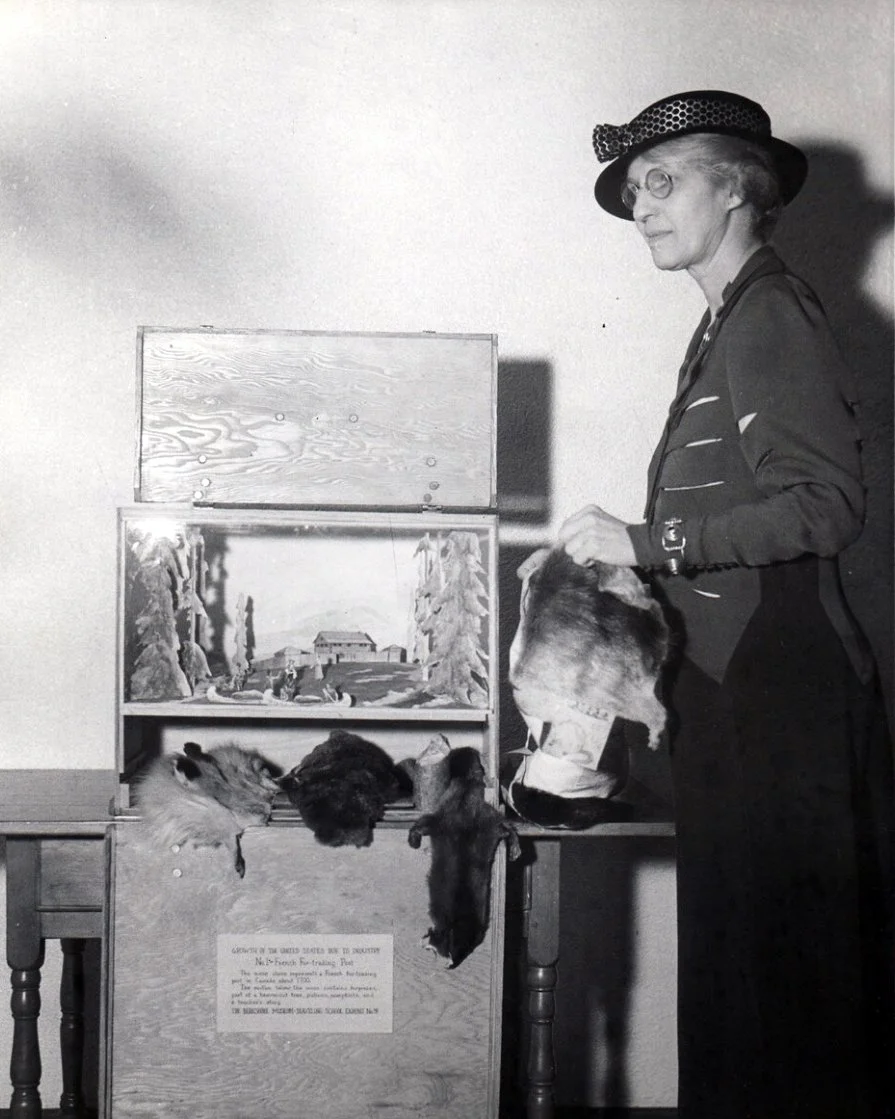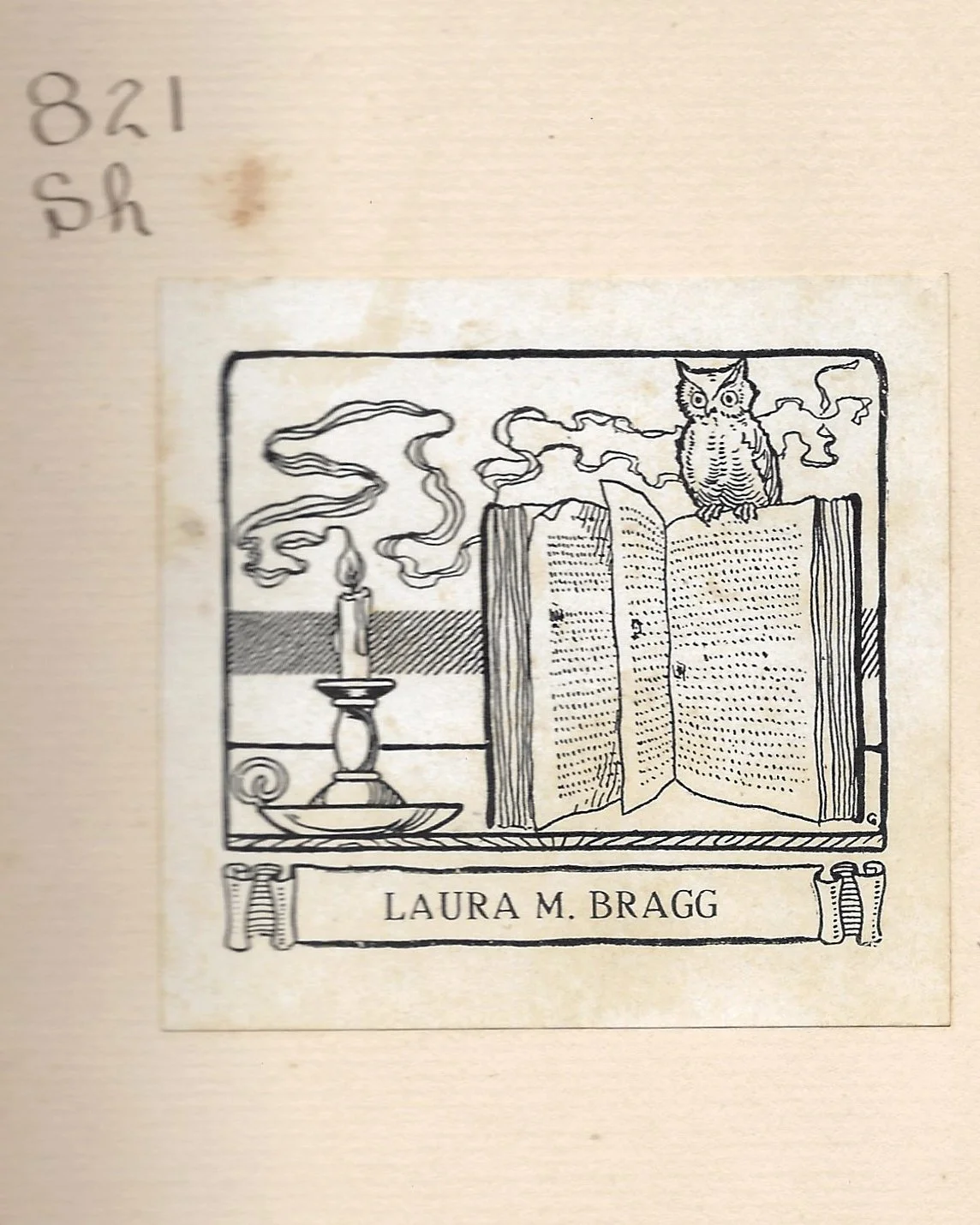SC Women: Laura Bragg
Laura Bragg with one of her traveling exhibit boxes.
Bragg’s personal bookplates, gifted to her by Belle Heyward.
As a woman-owned business dedicated to education and learning, we love to find and share the stories of women who made an impact on South Carolina history. One such woman is Laura Bragg, who we especially admire for her dedication to public education and sharing knowledge.
Born in Massachusetts in 1881, Laura earned a degree in library science from Simmons College. In 1909, she moved to Charleston and was hired to be the librarian at the Charleston Museum, and was soon promoted to curator of books and public instruction. She believed that museums should be spaces of learning, and developed the museum’s first educational programs. In 1920, she was named director of the Charleston Museum, making her the first woman in the US to direct a publicly-funded museum.
As the museum director, Bragg focused on enhancing the museum experience to be one of active learning rather than a simple tourist attraction. She developed public reading rooms and a lending library, which formed the foundation of what would become the Charleston Free Library, for which she served as the first librarian. Partially deaf from an illness as a child, Bragg understood the importance of interaction to learning. She developed what became known as “Bragg boxes,” transportable museum displays which could be taken to schools so that children could have a hands-on learning experience. Bragg also changed a policy to permit Black visitors to the museum on Saturday afternoons. While in today’s social atmosphere this still seems terribly restricted, it was a step toward integration made during the height of the Jim Crow era in Charleston.
In addition to museum work, Bragg also worked to preserve local historical resources, in particular the prehistoric and historic pottery of South Carolina. She also worked with the Society for the Preservation of Old Dwellings (today known as the Preservation Society of Charleston) to purchase and partially restore the Heyward-Washington House, which became the first historic house museum in South Carolina that was open to the public for tours. Bragg was also a co-founder of the Poetry Society of South Carolina, and was connected to many of the artists, writers, architects, poets, and preservationists whose work became known as part of the Charleston Renaissance. She was also likely part of the LGBTQ+ community: she never married, but was known to have romantic friendships with women and several Boston Marriages.
Considering her dedication to her museum work, historic preservation, public learning, and support of the creative arts - especially at a time with greater barriers for women working in such fields - it should come as no surprise that we appreciate Laura Bragg’s contributions to Charleston.
Learn more about LGBTQ+ Charleston History on our Real Rainbow Row tours.
Learn more about the SCLGBTQ+ Archive
Learn more about the Preservation Society of Charleston
Visit the Charleston Museum
Visit the Heyward-Washington House


